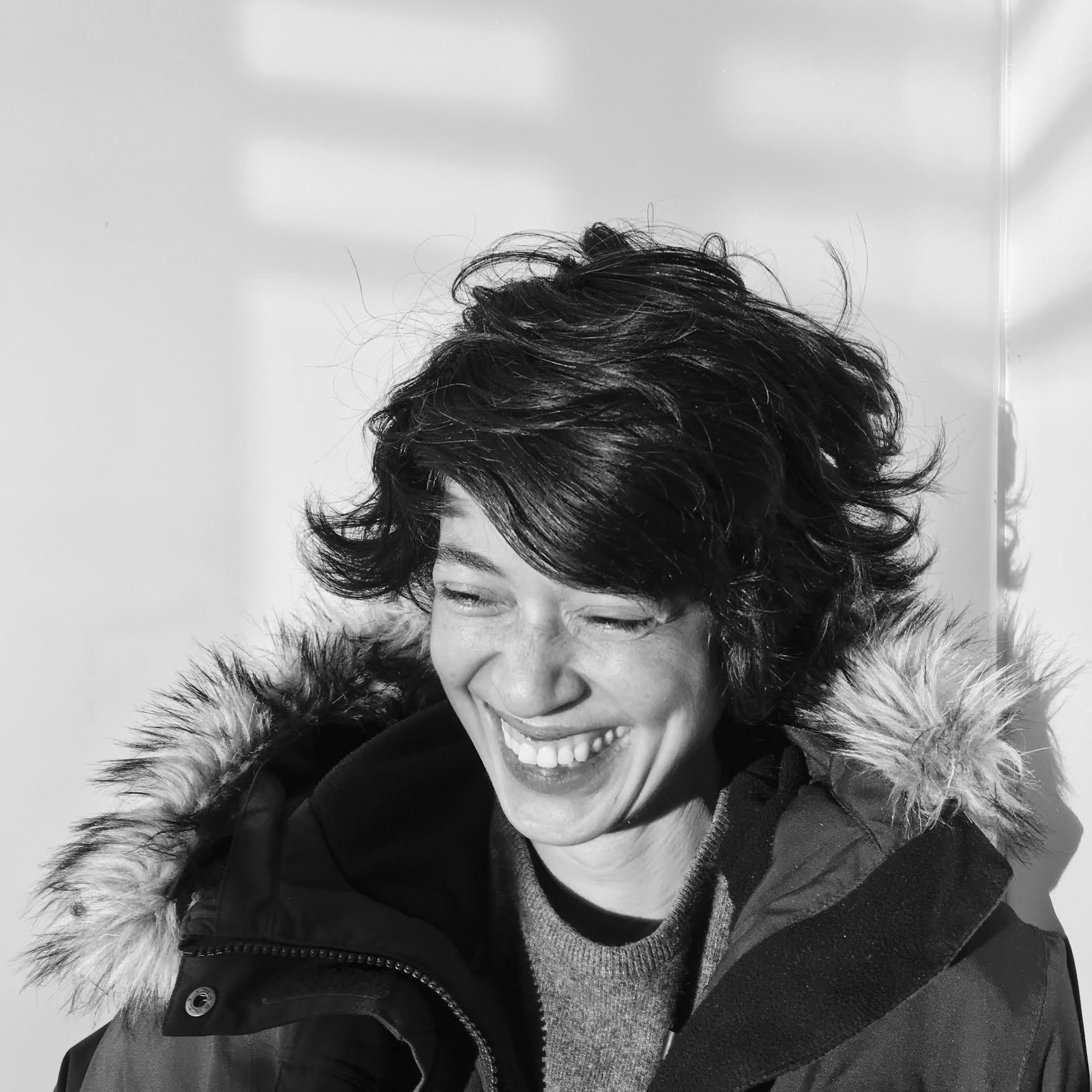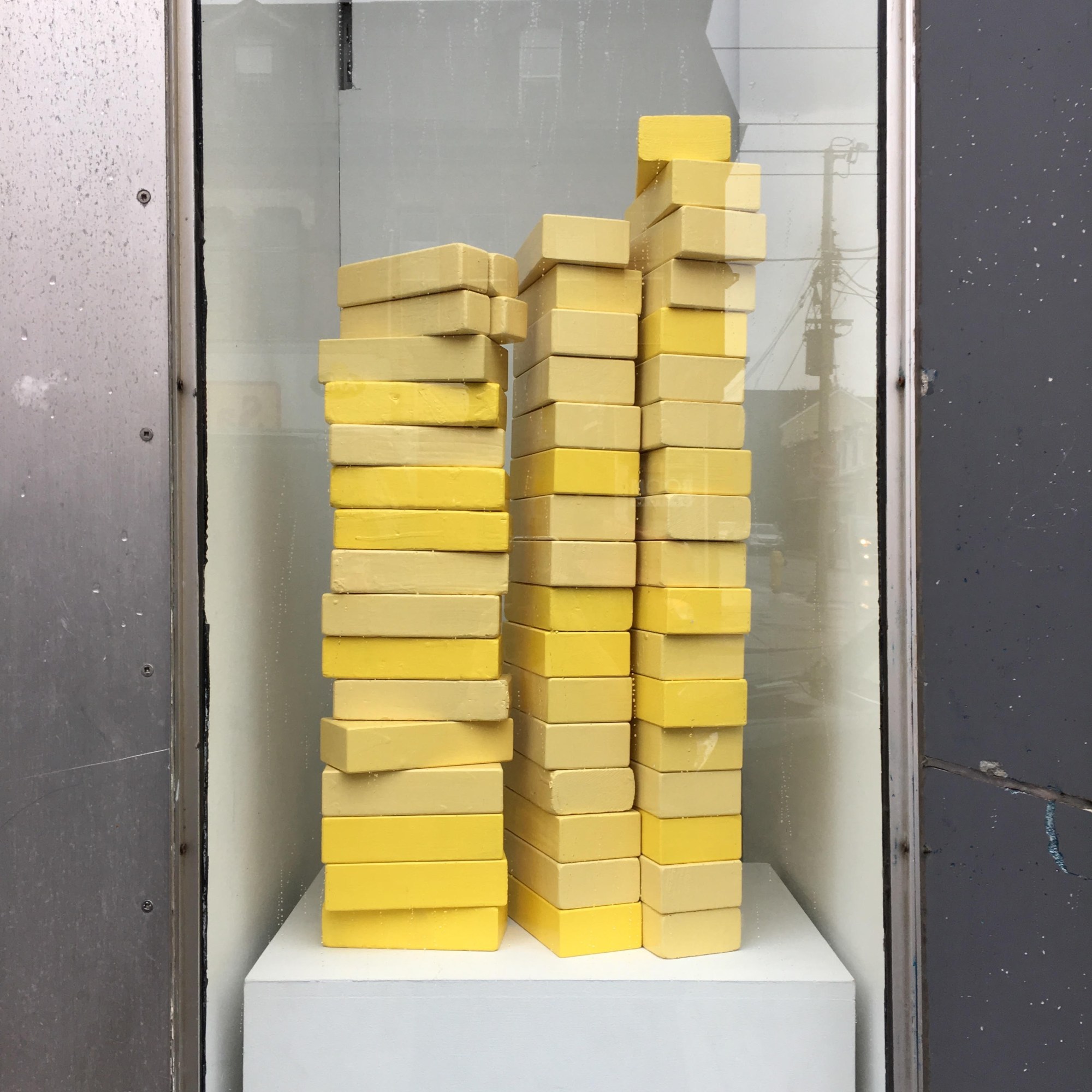Leanne Shapton savors the earthly pleasures — art, fashion, butter. Better yet, she studies them. Shapton writes and illustrates books that seek to understand why we feel, buy, and take interest in what we do. Since October, her fixation with the material world has taken a new shape. Shapton composed a work in three dimensions, debuting her first sculpture at *QueenSpecific, a window exhibition space and the brainchild of multimedia artist Joy Walker and Dufflet Pastries, a bakery in Toronto, Canada. Shapton titled it “25 Pounds of Butter.”
In her first book, published in 2006, she documented a series of exes. Was She Pretty? considered jealousy and memory and wistfulness and anger, all the while maintaining the kind of academic distance that Shapton has made her trademark. After that she published Important Artifacts and Personal Property from the Collection of Lenore Doolan and Harold Morris, Including Books, Street Fashion, and Jewelry, a weird and fantastic love story spooled out in the form of an auction pamphlet. Then came a catalogue of trees and a memoir, Swimming Studies. And she joined Heidi Julavits and Sheila Heti to co-edit Women in Clothes, which is the kind of book that every woman should own. It’s a talisman—whenever I open it I feel only luck and joy to have been born a woman, to love clothes, to have the freedom to dress myself.
Over email and just before “25 Pounds of Butter” closes, Shapton and I discussed patterns, athletes, and croissants. Rest assured: not even her colossus could ruin them for her.

When I pitched this interview, I described you as “medium agnostic” because you’ve created so much incredible work in so many different forms. Do you think that’s a fair characterization? Or do you feel more at home in one medium over the rest?
Yes, fair! I like responding to problems and ideas in various mediums. And I’m lucky I can in some cases. I guess I feel most at home in non-verbal communication, but my dream is to be a good writer, so I work very hard at that form. I’m mostly interested in how forms of communication are read, and how efficiently.
This is your first sculpture. What inspired you to make it?
The work is painted wood, not butter. And it was just inspired by my daughter’s building blocks, which I realized were the exact shape of half-pounds and sticks of butter. I’ve painted on blocks of wood before, making them into replicas of books.
When I think of butter sculptures, I think of state fairs, Paula Deen, Sarah Palin. Did you have any particular associations with them? What did you want to explore in your own take on them?
I love the metric of butter, the look and the feel of cold butter, the potentiality of butter. I like to bake and so butter is like another art supply. It was just coincidence that the installation is in a bakery window. When the artist Joy Walker, who curates the space, invited me to do a piece, I had already painted a few of my daughter’s blocks yellow.
What surprised you about the process?
How much I loved working in three dimensions.
A lot of your work seems preoccupied with the idea of an archive and what it does to a viewer or a reader to appreciate “items” in a series. Even “25 Pounds of Butter” is presented almost like an artifact in a catalogue. Have you always been interested in itemizing that way?
It is a way of isolating and seeing, to me. And I come from a sports background—competitive swimming—so it’s also the idea of breaking something down into parts to achieve a whole. The idea of laps. Also the idea of the vitrine, looking at something in a displaced way, it is my way of, I suppose, sterilizing and removing subjective environments so that the mind can make clear leaps and its own conclusions. I think in series, in patterns. I do all of my work by repetition.
You’ve written about your swimming career, and swimming strikes me as a very individual sport. As an artist, though, you’ve collaborated with what feels like hundreds of people and many, many women. When did you realize that you liked to collaborate? And is collaboration something an artist can be “good at”?
Yes, collaboration is like being part of a team where you know your strength, what you need to do to be in a supporting and supportive role, and how to get along. I’ve always been good on teams; I love the feeling of collaborative power, that you have a responsibility toward every other member not to let them down. Sometimes it inspires my best work. That said, I love being alone and can’t be around too many people for very long.
To be an athlete, you have to keep both your mind and body in perfect shape. Do you think that’s equally true of being an artist? Is your body just as much your instrument as your mind?
Yes. Especially when it comes to discipline and rigor. But as an artist I think I pay more attention to the nature of things, the ebb and flow of ideas. The ideas of patience and action are slightly different. Also, one can’t assume that athletes’ bodies are in perfect shape. While they are in performance mode they are often injured, ragged, torn and inflamed. The work is extreme. Really hard.
Having spent so much time with butter, do the contents of a pastry case appeal more or less now than they did before?
I love a good piece of cake and I put butter on my croissants.
“25 Pounds of Butter” is on view at *QueenSpecific in Toronto until December 16, 2016.
Credits
Text Mattie Kahn
Butter photograph courtesy Leanne Shapton
Portrait Kathy Ryan
